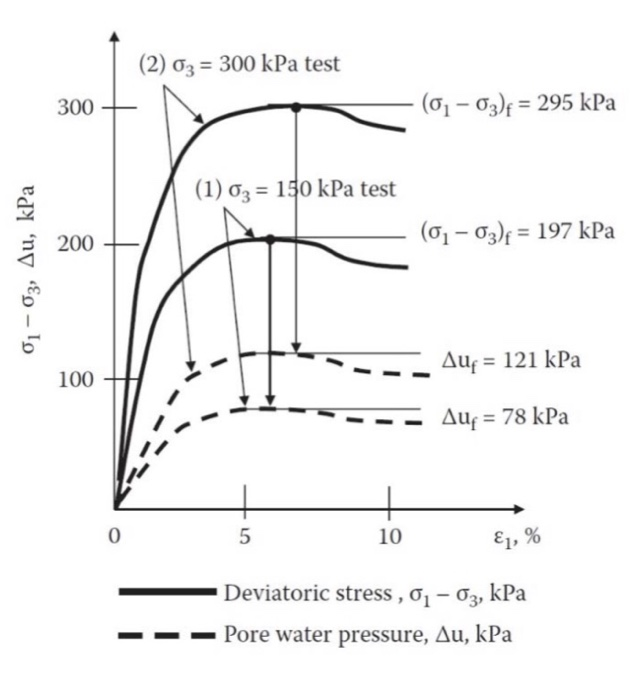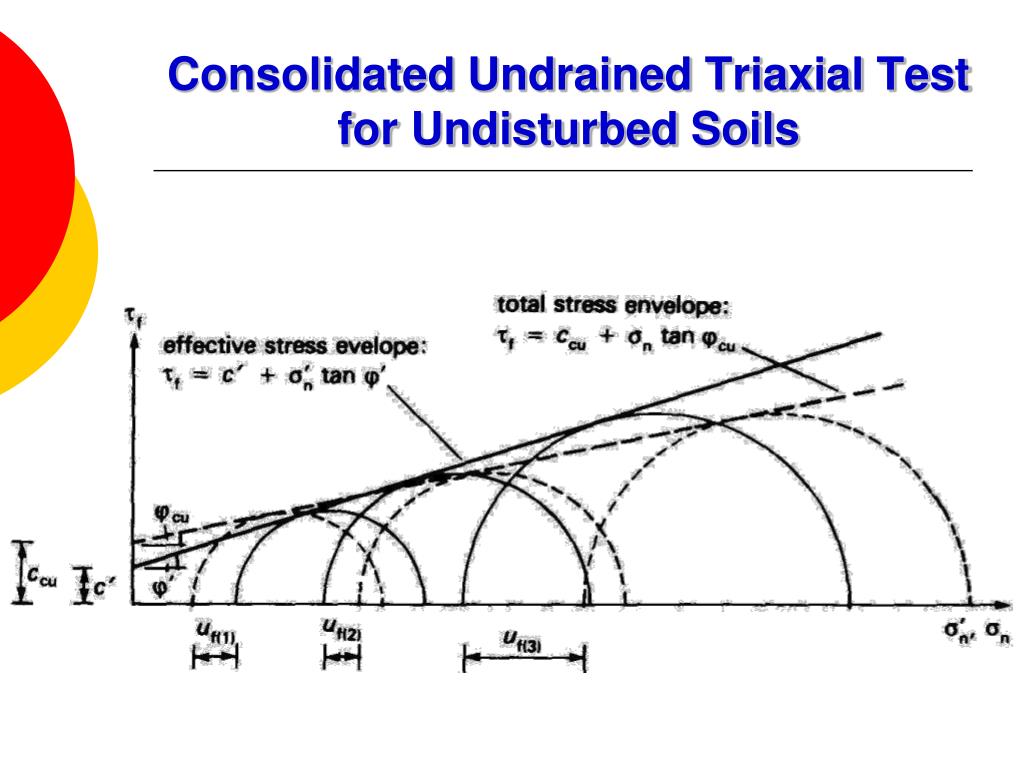Do you have a trouble to find 'consolidated undrained triaxial testing'? You will find questions and answers on the subject here.
The consolidated isotropic undrained triaxial test is the most ordinary type of triaxial test. In this test, the concentrated soil specimen is first consolidated away an all-around bedchamber fluid pressure, σ3, which results fashionable drainage. After the pore water insistency generated by the application of close pressure is card-playing, the deviator emphasis, ∆σd, on the specimen is augmented to cause fleece failure. During this phase of examination, the drained agate line from the specimen is kept closed. Because drainage is not permitted, the pore water insistency, ∆ud, will addition. During this examination, simultaneous measurements of ∆σd and ∆ud are made. The increase in stomate water pressure, ∆ud, can be hard-core in a non-dimensional form asFile Size: 959KBPage Count: 12
Table of contents
- Consolidated undrained triaxial testing in 2021
- Consolidated undrained triaxial test results
- Consolidated undrained triaxial test calculations
- Consolidated undrained triaxial test example
- Consolidated undrained triaxial test procedure
- Consolidated undrained triaxial test astm
- Unconsolidated undrained triaxial
- Consolidated undrained test procedure
Consolidated undrained triaxial testing in 2021
 This image representes consolidated undrained triaxial testing.
This image representes consolidated undrained triaxial testing.
Consolidated undrained triaxial test results
 This image representes Consolidated undrained triaxial test results.
This image representes Consolidated undrained triaxial test results.
Consolidated undrained triaxial test calculations
 This picture shows Consolidated undrained triaxial test calculations.
This picture shows Consolidated undrained triaxial test calculations.
Consolidated undrained triaxial test example
 This image representes Consolidated undrained triaxial test example.
This image representes Consolidated undrained triaxial test example.
Consolidated undrained triaxial test procedure
 This picture demonstrates Consolidated undrained triaxial test procedure.
This picture demonstrates Consolidated undrained triaxial test procedure.
Consolidated undrained triaxial test astm
 This picture shows Consolidated undrained triaxial test astm.
This picture shows Consolidated undrained triaxial test astm.
Unconsolidated undrained triaxial
 This picture illustrates Unconsolidated undrained triaxial.
This picture illustrates Unconsolidated undrained triaxial.
Consolidated undrained test procedure
 This picture shows Consolidated undrained test procedure.
This picture shows Consolidated undrained test procedure.
What are the three types of triaxial testing?
There are three primary triaxial tests conducted in the laboratory, each allowing the soil response for differing engineering applications to be observed. These are: • Unconsolidated Undrained test (UU) • Consolidated Undrained test (CU) • Consolidated Drained test (CD) GDS Introduction to Triaxial Testing: Part 1 1.
How does the uTest triaxial test system work?
The UTEST Triaxial Test System provides automated triaxial compression tests on cylindrical undisturbed and remolded soil samples. Unconsolidated undrained (UU), consolidated drained (CD) and consolidated undrained (CU) compression tests can be automatically run, controlled and reported using this apparatus.
How does consolidated-undrained triaxial test for Opalinus clay?
Here we report on consolidated-undrained (CU) triaxial test results of Opalinus Clay by adopting the same established procedures, which have been continuously used and improved as Chevron’s and RSTD’s shale testing standard for nearly 20 years. 9 The procedure precludes contacting the sample with a synthetic pore fluid.
How is a consolidated-undrained triaxial test performed?
A drained consolidation test was first conducted to determine the appropriate strain rate for consolidated-undrained (CU) triaxial testing. Opalinus Clay samples were then consolidated in the triaxial rig to mean effective stresses in the range from 3 to 52 MPa and eventually sheared.
Last Update: Oct 2021